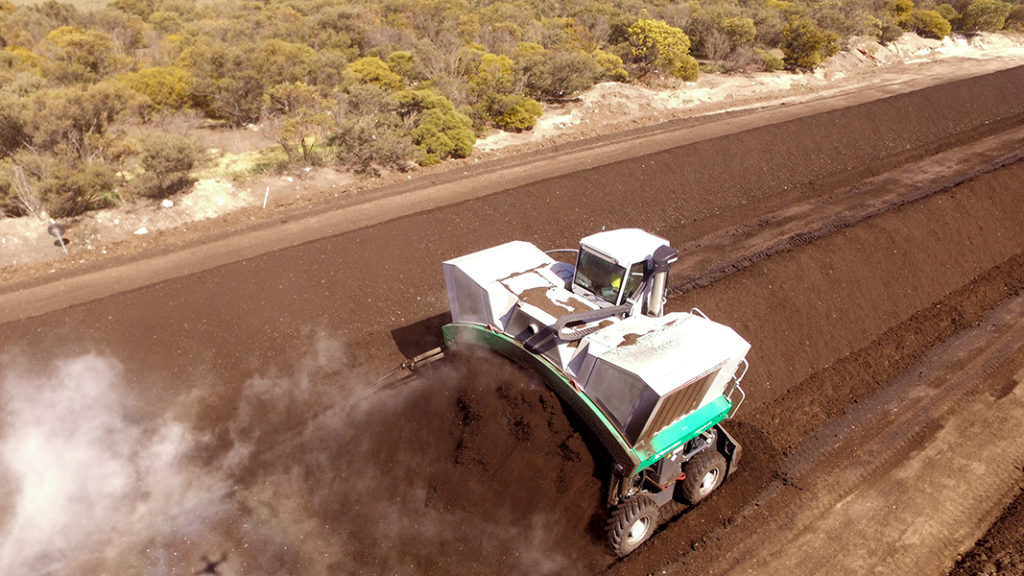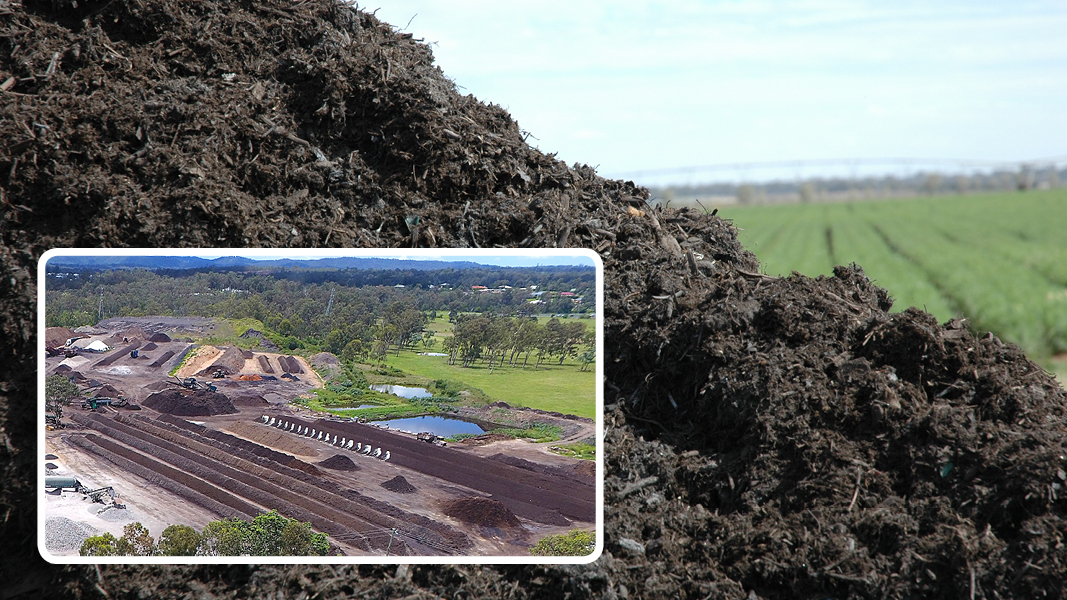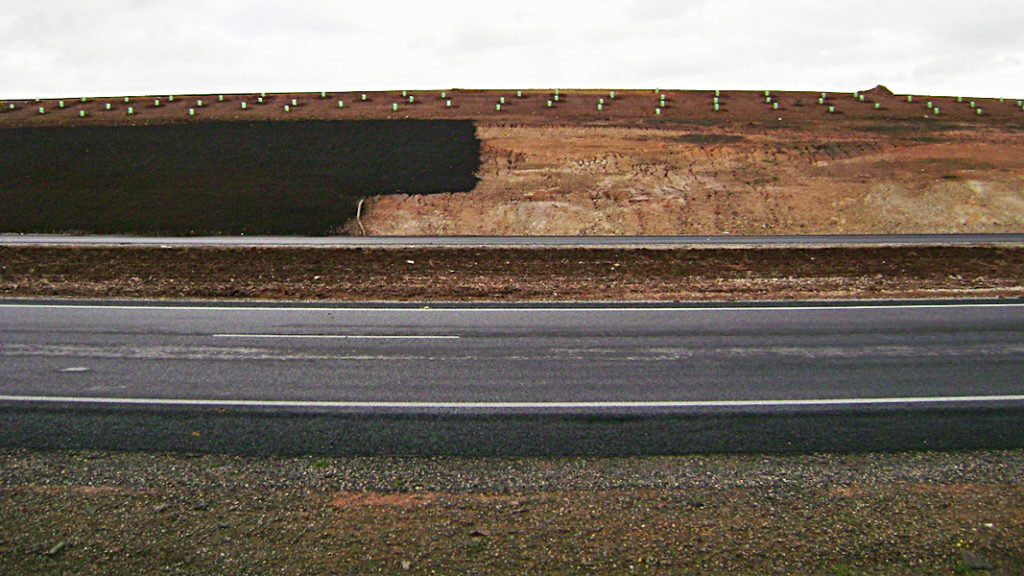Top: Candy Soil composting facility in Ipswish, Queensland, Australia (inset). Photos courtesy of AORA.
Nora Goldstein
In 2020, the Australian Organics Recycling Association (AORA) commissioned Australian Economic Advocacy Solutions (AEAS) to conduct two industry studies. The first focused on the economic contribution of organics recycling and revealed “a considerable macroeconomic contribution” — providing over 4,845 jobs, $366 million in wages and salaries, $1.9 billion in supply chain opportunities and $724 million in industry direct value-add to the Australian economy. The second study focuses on the capacity of the organics recycling industry. Based on the current available capacity of the industry, it could process an additional 51% of organic materials given the physical capacity of existing operations. Copies of both reports can be downloaded from the links provided at the end of this article.
The assessment tools used in these studies can be adapted by other countries to gauge the size and value of their organics recycling industry. The US Composting Council (USCC) is incorporating the models used for the Australia studies into the industry assessment it plans to do in 2021, notes Frank Franciosi, USCC’s Executive Director. “We are including all of the obvious data points, but want to also pull data that will show both the environmental and economic worth of the industry as a whole.”

Turning windrows at Peats Soil & Garden Supplies in White Valley, South Australia. Photo courtesy of Peats Soil
An article in BioCycle CONNECT in May 2020 reported on the first AORA study, “The Economic Contribution of the Australian Organics Recycling Industries,” released in Spring 2020. The assessment used data from 305 businesses operating in the sector that recycled and processed 7.5 million metric tons (8.3 million tons) of organic material in 2018-19 with collective industry turnover of more than $2 billion (includes revenue, investment, and expenditures). The second study, “Australian Organics Recycling Industry Capacity Assessment: 2020-21,” was released in early 2021, and was done in partnership with the Australia Department of Agriculture and Water and Environment and Green Industries South Australia. The second study, on which this article is based, utilized the same data sources.
Recycled organics (as discussed in the studies) are defined as a generic term for a range of products manufactured from compostable organic materials (garden organics, food organics, residual wood and timber, biosolids and agricultural organics). Australia’s overall organic material recycling rate was 51.5% when the data were collected. In the Economic Contribution study, AEAS modeled what the economic and environmental contribution of the organics recycling industry would be if the current organics recycling rates were increased under four different scenarios — to at least 70%, 80%, 90% and 95%. Under the 95% scenario:
- Organics recycling businesses would generate an extra $1.7 billion in sales providing an additional $1.6 billion in supply chain opportunity with an extra $612 million in industry value add towards the Australian economy;
- Organics recycling businesses would provide 4,094 extra jobs paying $309 million in livelihood to everyday Australians; and
- An extra 3.2 million metric tons (MT) of greenhouse gas emissions would be reduced.
Capacity And Capability Modeling
Based on 2019-2020 AORA Capability Survey, 51.5% of organic materials were sourced from councils (public agencies), 47.4% from commercial contracts and 1.1% from elsewhere (e.g., construction and demolition). The types of materials being recycled are: garden organics (52.2%), waste grease (14.8%), timber (7.7%), food organics (5.2%), (waste sludge (3.3%), meat render (1.5%), and other organics (15.2%). The Council supply reflects residential organics from curbside collection and transfer station drop-off, as well as other council waste (including parks and garden maintenance). Commercial and industrial (C&I) represents waste produced from businesses as a by-product of commercial activities.
Achieving the enormous economic and environmental benefit identified in the first study is not only contingent upon the right policy settings but also industry’s capacity and capability to take up the opportunity, notes the AORA capacity report. To achieve a 95% recycling rate the industry would need to increase its output by 6.4 million MT (~7 million tons) to 13.9 million MT (~15.3 million tons) from its current level of 7.5 million MT (~8.3 million tons) each year. This laid the groundwork for the capacity and capability study to determine the required increase in processing and production necessary to achieve 70%, 80%, 90% and 95% organics recycling rates. The current additional capacity of the industry accounts for 3.8 million MT (~4.2 million tons) of available collective processing capacity each year.
On the basis of these calculations, there will be a requirement to promote new industry participants once existing capacity is exhausted. This will particularly be the case for organic material recycling in most rural and regional areas, where there is little or no way to deal with organic waste but to landfill it due to low capacity and infrastructure.
In addition, the industry believes it is able to increase by 52.5% the total metric tons of products sold given market demand — equivalent to an additional 3.4 million MT (~3.7 million tons) of compost and non-compost product sales each year. In 2019-20, industry products were sold to the following market categories: Urban amenity 52.5%; Intensive agriculture 26.2%; Rehabilitation 2.3%; Enviro-remediation 4.1%; and Other 15.0%.
Based on the existing and additional potential sales capacity there is approximately 1.1 million MT (~1.2 million tons) of excess market demand available to achieve an Australian recycling rate of 70% but then the market transitions into insufficient demand for organic recycling products to meet the 80% (187,559 MT shortfall (~207,000 tons)), 90% (1,441,945 MT shortfall (~1.6 million tons)) and 95% recycling rate (2,069,139 MT shortfall ~2.3 million tons)).
Facilitating Industry Growth
In respect to industry capability — the skills, processes and knowledge to meet an increase in the processing of organic materials and the supply of recycled organic material products — AEAS determined there is considerable existing capability available to lift organic material recycling rates. “Operational issues such as access to technology, labor costs, logistics, etc., are considered to be very minor obstacles to growth at present and indicate that the industry’s constraints are less internal and more externally focused,” states the report. “For example, based on the Survey the largest obstacles to the operation and growth of the industry at present include regulatory policy uncertainty; contamination of input material; government policy (e.g., waste and recycling strategy); business licensing and operating permits; development applications; government procurement supporting organics recycling products; and short council contract periods.”
Appendix I of the Capacity Report lays out AORA’s National Industry Policy Document Recommendations to facilitate growth of Australia’s organics recycling industry and expand the economic and environmental benefits. “AORA’s preferred policy approach is a ’competitive federalist’ model where incentives, financial and other, are on offer from the Federal Government to states, and from states to local government, for those moving to adopt key change measures most quickly,” explains Peter Olah, AORA’s National Executive Officer. “Those are the up-front carrots, and the sticks will come in after several years. We are in the fortunate position that our Federal Government has entered this policy area for the first time over the last few months, and understands and supports organics recycling strongly. They’ve indicated their willingness to offer both financial and policy support to get state and local governments moving in the right direction. Rolling out our 10-year roadmap to achieve our goals is the next step in this process.”
The two Australian Organics Recycling Association (AORA) reports discussed in this article — “The Economic Contribution of the Australian Organics Recycling Industries” (Spring 2020) and “Australian Organics Recycling Industry Capacity Assessment: 2020-21” (January 2021) — can be downloaded from BioCycle.net. BioCycle extends its appreciation to AORA for making the reports available.














